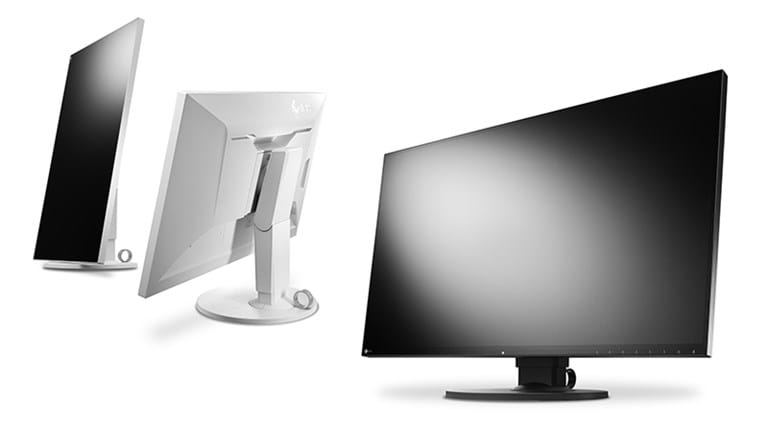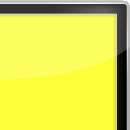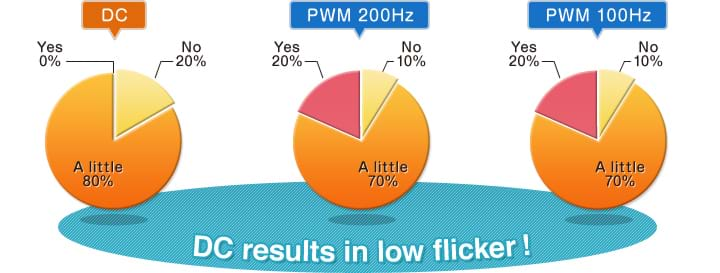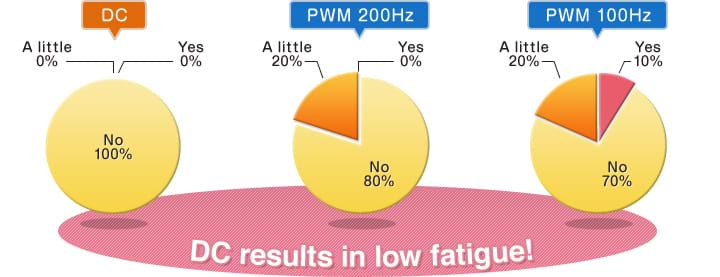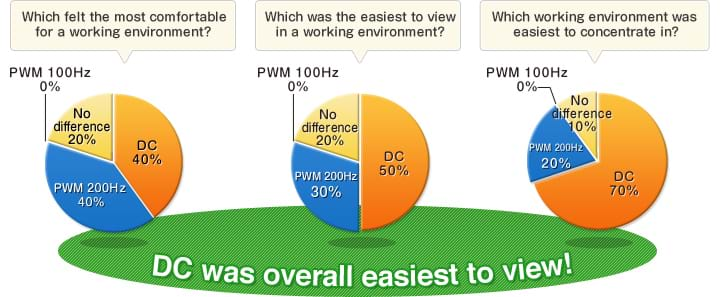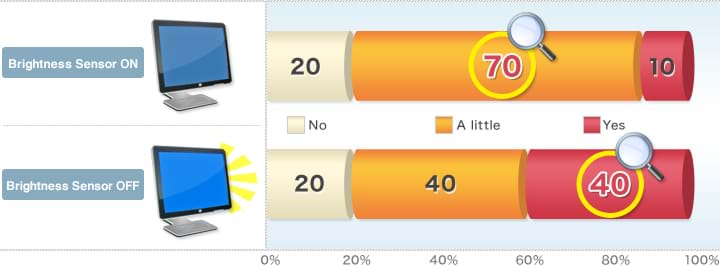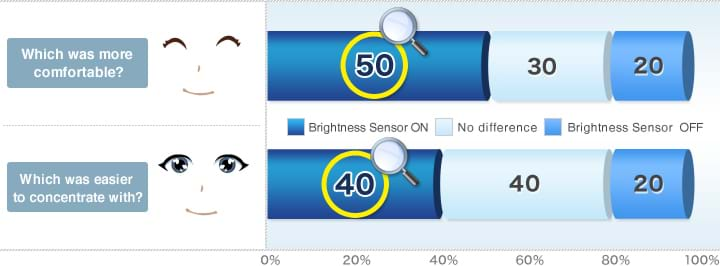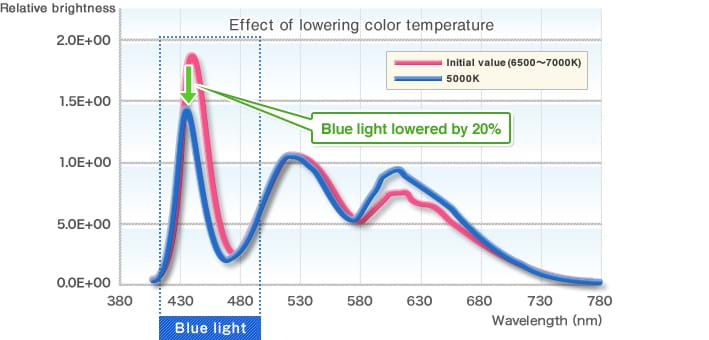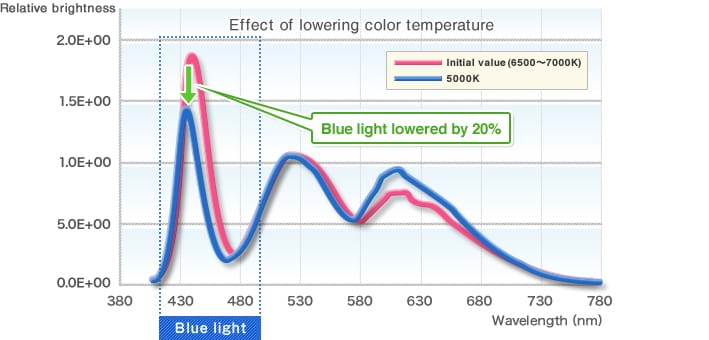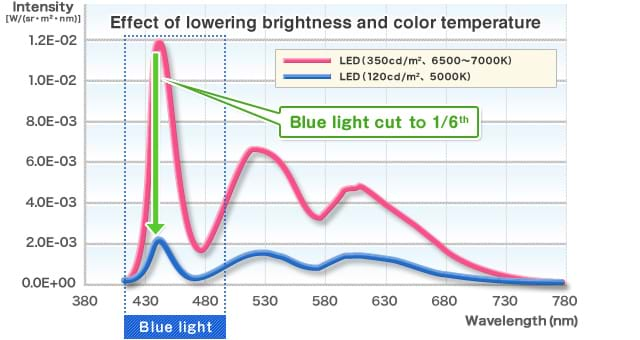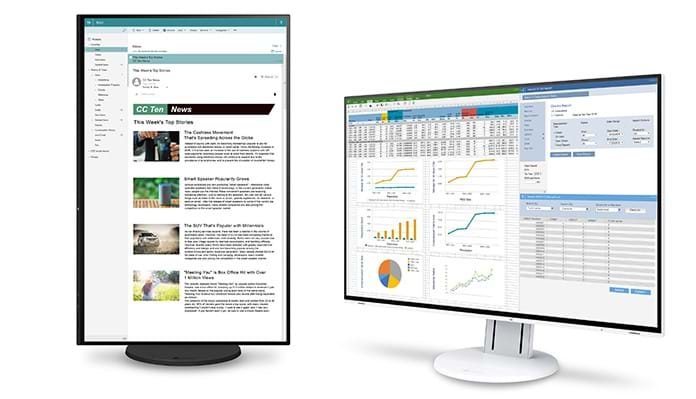How to Minimise Eye Strain when Working on a Computer
Do you spend a lot of time in front of a computer?
Chances are, your eyes (like ours) are glued to a screen for several hours. With most of our work (and entertainment) depending on computers, we easily spend a whopping 12 hours or more in front of a screen each day!
Staring at a computer, gaming console or smartphone for copious amounts of time can cause your eyes to get tired, leading to eye strain. According to WebMD, and several other studies, nearly 10 million visits to an eye doctor are due to computer related eye symptoms. As our dependence on computers and smartphones continues to grow, this number shows no signs of slowing down.
Eye fatigue occurs when you look at a computer screen from a close distance for prolonged periods of time.
Being in the visual technology sector, 'eye strain and fatigue caused by computer screens' has been an area we've invested extensively in. In other words, EIZO is not just about computer monitors, but about a comfortable viewing experience. Our goal was to create a range of monitors that is 'easy on the eyes'.
Enter, the FlexScan EcoView range.
The most important three factors that contribute towards eye strain and fatigue are:
- LED backlight & flicker
- Brightness of the screen
- Blue light
As a result, we produced a range of office monitors that would help overcome all three of these issues.
Let's dig deeper.
Are LED backlight and flicker related to eye strain?
LED backlight and eye fatigue
With LED monitors becoming the norm, the number of users who attribute eye strain and fatigue to the flicker caused by LED backlights has been on the rise. The high speed at which the LED backlight flashes, is generally considered as "flicker". Of course, even those who cannot perceive flicker may be affected by it without realizing it.
How does flicker work?
Brightness control, or dimming, is separated into two: PWM (pulse-width modulation) and DC (direct current).
The downside of PWM dimming is that although the screen is flashing at a high speed of approx. 200Hz, users tend to perceive flicker.
Most, off the shelf, LED monitors use PWM because the design is relatively simple and is easy to mass produce. The next time you're shopping for a computer monitor, if it comes cheap, this may be a reason why.
Does flicker cause eye strain?
An experiment conducted by Kitasato University (Japan), School of Allied Health Sciences (n=10) on user experience when viewing content in varying brightness levels on PWM and DC revealed the following:
Did you perceive flicker?
Did you experience eye fatigue?
Which was the easiest viewing experience?
It is evident that PWM and DC, both have positive effects in the user's viewing experience.
At EIZO, we have developed a hybrid model that combines the pros of PWM and DC dimming. The result was the FlexScan EcoView (EV) range of office monitors.
Bright screens and eye fatigue
Do bright screens cause eye fatigue?
At first glance, a bright screen seems clear and easy to see. However, this is a two-edged sword.
A screen that is too bright can cause eye fatigue. On the other hand, if a display is too dark, it becomes a challenge to make out the objects on the screen. And the result is... Yes, you've guessed it, eye strain.
Our Auto EcoView technology automatically adjusts the screen's brightness to an appropriate level in response to ambient lighting. The test results are as follows:
Source: Kitasato University (Japan), School of Allied Health Sciences
Did you perceive flicker?
How were fatigue and readability levels?
At EIZO
Most of our general-purpose monitors come equipped with Auto EcoView, a brightness sensor. Auto EcoView ensures the screen is never too bright or too dark; it automatically adjusts the screen's brightness to the optimum level, alleviating eye fatigue caused by working at the computer for long hours.
The blue light and eye strain connection
Does blue light cause eye fatigue?
The influence of blue light on eye fatigue is an increasingly popular topic. First, let's see where blue light falls on the light spectrum.
Blue light is part of the visible spectrum and has a wavelength that is close to that of ultraviolet light.
99% of the ultraviolet rays that reach the Earth are UVA with a wavelength of 315 - 400nm. Although blue light is part of the visible spectrum, it still has an influence on eye fatigue. Since its wavelength puts it close to UVA, it is conceivable that it could cause strain on our eyes.
Comparing the relationship between LED and blue light, we have confirmed that LED backlights and CCFL backlights have about the same amount of blue light.
How to reduce blue light on a LCD monitor
Knowing that blue light influences eye fatigue, we tested how much we could decrease the amount of blue light by making adjustments to the monitor.
Lowering the colour temperature
Lowering the colour temperature causes light distribution to shift towards longer wavelengths (more reddish colours). When we change the initial colour temperature of our monitors (6500K - 7000K) to 5000K...
Lower colour temperature and brightness
By lowering the brightness you can reduce overall energy usage. When we adjust the monitor's brightness down from the highest setting to an adequate value (approx. 20 cd/m², and the colour temperature to 5000K...
At EIZO
We greatly adjusted the monitor's brightness and colour temperature resulting in a reduction of the effects of blue light using various technologies. We were able to create a comfortable viewing environment with Auto EcoView automatic brightness adjustment and Paper mode, part of Fine Contrast presets.
EIZO office monitors help minimise eye strain
Equipped with multiple solutions to combat eye fatigue, the FlexScan EV Series combines eco with ergonomics for high quality monitors you can trust.
Here's an independent review of the FlexScan EV2451 by Create Success TV.



